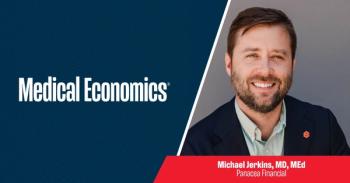
Massive study on medical conditions and spending aims to fill in knowledge gaps about U.S. health care
Key Takeaways
- The study analyzed 40 billion insurance claims and hospital data to assess U.S. healthcare spending from 2010 to 2019.
- Significant intra-state spending variations were observed, with some counties spending 30-40% more or less than state averages.
Author describes origin of new cost breakdown on health care spending over a decade.
Patients and various insurers spend a lot of money on health care in the United States.
Here is how much: $2.4 trillion in 2019, according to a new,
Researchers made a deep dive into data for “Tracking U.S. Health Care Spending by Health Condition and County,” published Feb. 14 in JAMA. It was a major undertaking to pull together figures that paint a medical and financial
The data, writ large and down to estimates for the 3,110 counties of the United States, might also spark ideas on ways to improve that system, he said.
Dieleman spoke with Medical Economics about the study, its findings, and what improved knowledge about medical conditions and spending could mean for American health care. There is an accompanying
This transcript has been edited for length and clarity.
Medical Economics: Can you explain how and why this study came about?
Joseph L. Dieleman, PhD: This study is really a four-year project with a team of eight to 10 people each year working on this, and we've been working on it a long time because we think it's tremendously important. We think of health care and health systems and cost containment, especially under the perspective that you need to know where the money is coming from and where it's going in order to make important improvements. And in the health services and health economic space, there tends to be a lot of studies that focus on one type of care, maybe hospital care, outpatient care, or one payer, a lot of studies on Medicare, private insurance, that use different databases. But there's not a lot that's really comprehensive. For us, going back to that theme of needing to know where the money's coming from and where it's going, we felt like you needed to do so and have a really big picture understanding of the health care system. And so that really is the background of the paper, saying, can we look at all payers, all major types of care, and understand what the resources are coming from, what they're doing? And ultimately being able to pair that with health outcomes data, something that we haven't done yet, but at the county level, there's a lot of information about mortality rates and morbidity rates, and historically, that just hasn't been true on the health services side. Knowing utilization or prices at the county level isn't something that's been widely available, and so we wanted to fill that gap.
Medical Economics: Because of the duration of the study, and the scope and scale, can you talk about your source materials? How many records were you able to analyze?
Joseph L. Dieleman, PhD: For this study, like I mentioned, we worked on it for many years with a big team. We analyzed 40 billion insurance claims, and those claims come from Medicare and Medicaid as well as private insurance. And then we also used hospital administrative data. We had about a billion records of hospital admissions and all the information that went along with each one of those stays. And then finally, to fill in the gaps, we also use some survey data to both understand the population in each county, but also to get at information about the uninsured population, which is obviously not going to show up in claims data. And so we put all that together. In many ways, the project is a big data exercise of thinking about each one of these data sources, the gaps and the biases that exist, using statistics to fill in those gaps and address those biases, and then putting it all together to get a comprehensive picture.
Medical Economics: What were the most surprising findings regarding health care spending across the counties?
Joseph L. Dieleman, PhD: I tend to think of there as being two really big surprises for me. The first is just the sheer volume of the differences in spending levels across the counties. We know from studies done by CMS that spending across the states has tremendous variation. We know states like Idaho spend very little, Utah spends very little. States like New York and Massachusetts spend a lot. But what I didn't expect is that we'd see almost as much variation within states as we see across states. And so it's not uncommon within a state for some counties to spend 30%, 40% less than the state average, and other counties within that same state to spend 30%, 40% more than the state average. And so that variation within states is, I think, really the first big surprise. And if you just want to put that in dollar terms, we have counties that we saw spending around $4,000 per capita, and we have other counties in our study that are spending $13,000 per capita. So, this really amazing variation across counties and within states is the first kind of big takeaway.
The second thing that surprised me a lot kind of builds from that. In health economics, we know there's a huge, important role that prices play. If you ask the question, why does the U.S. spend more than other high-income countries, say, in Europe, a lot of that has to do the prices. If you ask the question, why do we spend more than we did three or four years ago on health care? A lot of that has to do with prices. But what we found when looking at the variation across counties is, a lot of it has to do with utilization. There's a little bit of an impact of age and disease prevalence, which you would expect. We know we spend less on younger populations. We know we spend less on healthy populations. Those things tend to make sense, and of course, where there's higher prices, we spend more too. But what we really found is that 65% of the variation across counties and funding levels has more to do with utilization than anything else, and so that simply means people going to the doctor more or less, being admitted to the hospital more or less, people going to the emergency department or getting prescriptions more or less. That variation really underpinned a lot of the variation that we saw in spending levels.
Newsletter
Stay informed and empowered with Medical Economics enewsletter, delivering expert insights, financial strategies, practice management tips and technology trends — tailored for today’s physicians.








